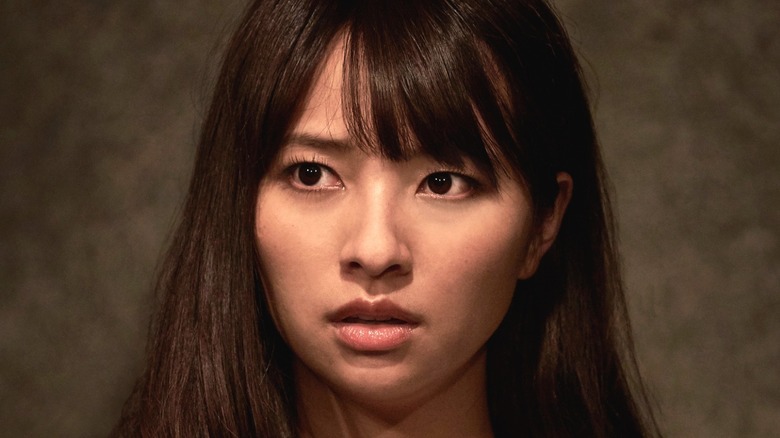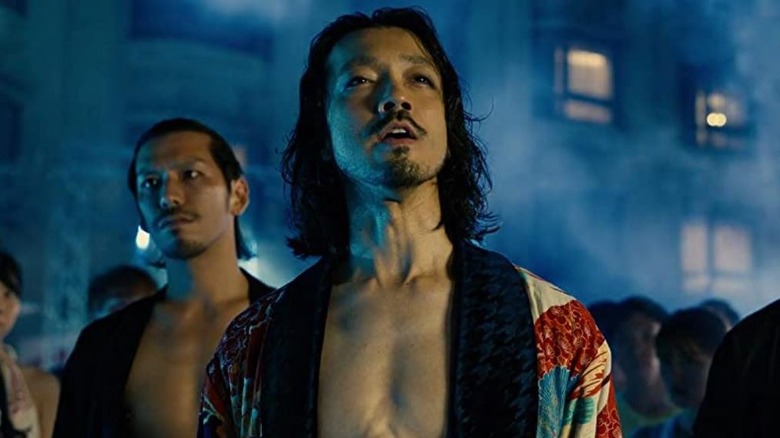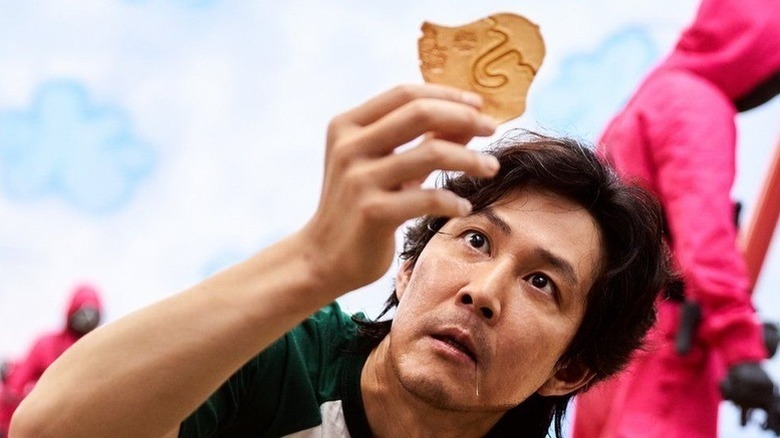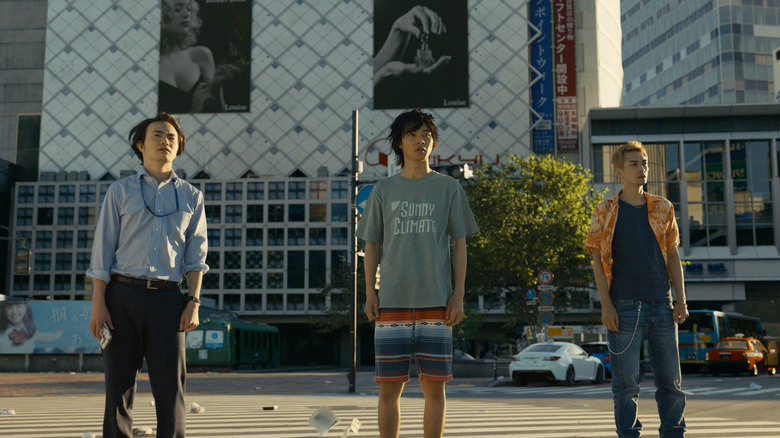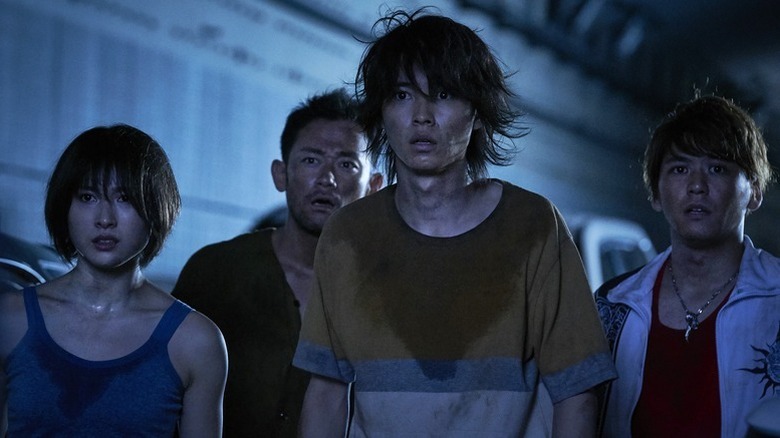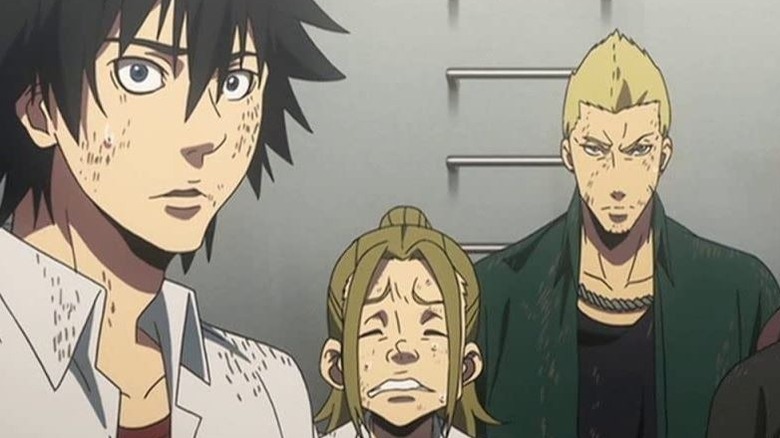The Untold Truth Of Alice In Borderland
Netflix's "Alice in Borderland" is a massive show about a massive mystery. Based on Haro Aso's manga work of the same name, the Japanese sci-fi drama focuses on a group of friends getting stranded in a mysterious, largely empty version of Tokyo. There, they and other unfortunate souls are forced to play a series of deadly games in order to get a few more precious days to live with every win.
The premise is complicated and chilling, yet incredibly entertaining. Combine this with a legitimately moving and surprising plot, and the show has gained more than enough popularity to make sure that "Alice in Borderland" Season 2 is on the way. It seems that you'll have to wait for new episodes of the show until late 2022, but fortunately, there are plenty of interesting facts about the show to help with the wait. Let's take a look at the untold truth of "Alice in Borderland."
The beautiful people of Borderland
Actors are rarely unattractive, but if you've noticed that the cast of "Alice in Borderland" is particularly camera-friendly, well ... there's a pretty good reason for that. As the cast notes on Robot production company's "Alice in Borderland" site readily reveal, certain major characters like Arisu (Kento Yamazaki), Usagi (Tao Tsuchiya), Karue (Keita Machida), Chota (Yuki Morinaga), and Chishiya (Nijiro Murakami) are portrayed by highly talented professional actors, but a notable portion of Borderland's eccentric denizens come from modeling and musician backgrounds. Notably, the charismatic Hatter is portrayed by Nobuaki Kaneko of Japanese alt-metal band Rize (per Japanese Music Entertainment), while Ayana Miyoshi (who plays Ann), Shuntaro Yanagi (Last Boss), and Aya Asahina (Kuina) all started out as models. Multiple members of the cast also have a background in the Gekidan EXILE theater group.
Everyone in the cast can quite obviously hold their own as an actor, but the fact that they come from such eclectic and wildly different backgrounds — much like the characters they play — adds extra credibility to their chemistry.
Squid Game made the show a rare double hit
The year 2021 was a huge one for Asian survival drama, thanks to the overwhelming success of Netflix smash hit "Squid Game." The South Korean global phenomenon paved the way for shows like "Train to Busan" director Yeon Sang-ho's dystopic supernatural thriller "Hellbound" ... and, as luck would have it, "Alice in Borderland."
Though "Alice in Borderland" Season 1 was released on December 10, 2020, and "Squid Game" didn't drop until September 17, 2021, the unprecedented success of the latter immediately sent "Alice in Borderland's" global viewing figures in steep rise (per Variety). This isn't necessarily shocking, given the two show's vaguely similar premises. What's interesting, however, is the fact that "Alice in Borderland" was already a very popular show the first time around, popping up on Netflix's prestigious Top 10 lists in numerous areas after it debuted on Netflix.
However, while the show "only" made it to around 40 different Top 10 lists on its own, "Squid Game" made it a Top 10 hit in over 50 areas — thus giving "Alice in Borderland" the rare prestige of being a Netflix smash hit twice over.
Shibuya Crossing trickery
"Alice in Borderland" has no shortage of iconic moments, but if you know what you're looking at, the most impressive of them all is in the very first episode, which shows the main trio causing mayhem at Tokyo's famous Shibuya Crossing. Per Japan Travel, this complex intersection is arguably Tokyo's most famous location, on par with modern wonders of the world like the Eiffel Tower. It's also very, very colorful and crowded at all hours.
Having the characters step into the abandoned "Borderland" Tokyo in a famously busy place like this really drives home the terrifying nature of their predicament. As you can probably guess, it was pretty difficult to pull off, too — especially since the whole thing was shot as a continuous, lengthy take (per SPOT).
Instead of attempting a truly astounding feat of crowd control by roping off the entire area to pull off this fiendishly difficult shot, the makers of the show turned to technology. They created a gigantic open set where the actors and certain key set pieces were real, and the square around them was CGI in the finished product (via Theta Lab). The process was incredibly arduous, but as anyone who has seen the scene can no doubt attest, the end result is as immersive as it gets.
There are significant differences between the manga and the show
Out of the sheer necessity that comes from the fact that live action and print are two very different mediums, TV adaptations can differ from the source material in a number of ways. However, people who are only familiar with the Netflix version of "Alice in Borderland" might be surprised to find out just how different the story is in manga form. There are notable differences when it comes to things like how the characters get transported into Borderland. The main characters' personalities and backgrounds are different — most notably, the Netflix version of Arisu is a super-talented gamer with slacker tendencies, instead of the downtrodden and antisocial, but keen and puzzle-loving version of the manga.
The biggest difference, however, are the games themselves. The manga version of the first game, Three of Clubs, is a complex trivia game with a side order of fire arrows. With its labyrinthine structure of incinerating rooms and laser traps, the Netflix version of the game is a completely different and vastly more visually impressive affair, likely designed to give the audience an idea of the stakes and the various players' abilities. Other games keep their basic premise, but change significant details. Oh, and the big villain reveal is also somewhat different in the Netflix version ... but enough about that, lest we risk venturing too far into spoiler territory.
It's not the first adaptation of the manga
With all the hype around Netflix's "Alice in Borderland" adaptation, it's easy to forget that it's actually not the first small screen adaptation of Haro Aso's manga. Per Anime News Network, a three-part original video anime of the show came out in 2014 and 2015, with prominent voice actors like Yoshimasa Hosoya, Tatsuhisa Suzuki, and Tsubasa Yonaga voicing the characters. Given the fact that it originally shipped with three volumes of the "Alice in Borderland" manga, the Hideki Tachibana-directed three-parter hasn't been the easiest thing to watch on a whim. However, this might be about to change.
The success of the Netflix show has evidently increased the public interest in the IP, and in 2021, Sentai Filmworks licensed the anime version's distribution rights in numerous countries, including the US. Perhaps this version, too, will eventually be able to create the kind of prestige the story's manga and live action versions already enjoy.
